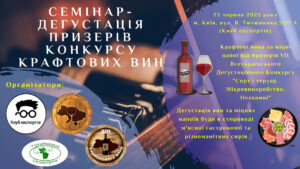
On June 23, 2023, Kyiv Think Tank Club, within the framework of the initiative aimed at supporting and developing the wine industry, will hold the second tasting seminar-presentation dedicated to the winners and finalists of the VIII All-Ukrainian Tasting Competition “Variety and Terroir. Micro winemaking. Unbreakable”.
According to the organizers, this event will be an interesting event for all wine lovers, both expert sommeliers and restaurateurs, representatives of retail, media community and ordinary consumers. At the seminar, visitors will be able to learn about the products of the leading craft producers of Ukrainian wines and spirits, as well as join the platform for the exchange of opinions and ideas between leading experts in the field of winemaking.
Maksym Urakin, founder of the Club of Experts, PhD in Economics, emphasized the importance of supporting domestic wine and spirits producers.
“Our event is not just aimed at developing a culture of wine consumption in Ukraine. It also contributes to the growth of domestic production, helping the economic revival of our country. Each bottle of wine produced in Ukraine is a step towards creating jobs, increasing tax revenues and enhancing economic stability,” said Maxim Urakin.
The wine samples presented at the event will be presented by the finalists of the VII All-Ukrainian Tasting Competition “Variety and Terroir. Micro winemaking. Unbreakable” of the All-Ukrainian Association of Winemakers and Sommeliers, which will give visitors the opportunity to experience a rich bouquet of flavors created using traditional winemaking methods and modern technologies. Natalia Blagopoluchnaya, President of the Ukrainian Association of Winemakers and Sommeliers, noted that all wines presented at the event have been expertly evaluated according to all criteria, from aroma and taste to texture, color and overall harmony.
The following Ukrainian wines and spirits will be presented at the wine evening:
“Sparkling pink, 2019” by 46 Parallel TM;
“Riesling, 2022 by Babchuk Winery;
“Rkatsiteli Orange, 2020” from TM “Driukivski Wines”;
“Pinot Noir, 2021 from Chateau Pinot TM;
“Pinot Noir, 2020 by Georgiy Samsoniuk;
“Merlot, 2021” and “Cabernet Sauvignon, 2021” from TM “My Wine”, Eduard Gorodetsky;
“White dessert vermouth” and “Honey casserole, 40%” from TM “Winemaker Vinokur”;
“Chacha Odesa Black, 2022, 42%” from TM “Winemaker Vinokur”;
Zweigelt 2019 TM “Vina Kovač”
Chorna perlina 2017 TM “Vina Kovača”
“Apple, 42%” from TM “KALYUS WINERY”;
“Calvados, 42% from Ivan Gorobets.
The partners of the event are the All-Ukrainian Association of Winemakers and Sommeliers, the House of Ukrainian Wine and the Public Union Ukrsadvynprom, which actively support the revitalization of domestic winemaking and expansion of its influence on the global wine market.
Information support for the event is provided by Open4business portal and Interfax-Ukraine news agency.
The special partners of the evening, Zakarpatski Kovbasy TM and Kozatski Kozyrni Cheese TM, will provide the perfect gastronomic pairings for the wines, which will help to further reveal the taste of each bottle presented.
Each participant will have the opportunity to personally taste the wines of leading Ukrainian winemakers, evaluate their character and quality, exchange opinions with other visitors and experts, and ask questions to the representatives of the producers. The seminar-tasting, which will be held at the Club of Experts, promises to be a bright event in the life of the Ukrainian wine community, bringing together wine connoisseurs, experts and producers under one roof.
In addition to supporting domestic winemaking and getting acquainted with the best samples of Ukrainian wine, the event participants will have the opportunity to engage in an important dialog about the future of winemaking in Ukraine. This includes discussing the current problems and challenges faced by the industry, sharing experiences and finding potential ways of development.
The organizers of the event hope that this initiative will not only raise the status of Ukrainian winemaking, but also stimulate the development of this industry by attracting investors’ attention, facilitating international dialogue and opening new prospects for Ukrainian wine on the global stage.
CLUB_OF_EXPERTS, HOUSE OF UKRAINIAN WINE, SEMINAR, TASTING, UKRAINIAN_WINE, URAKIN, WINE, WINE_INDUSTRY, WINEMAKING
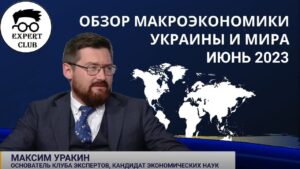
Kiev analytical center “Club of Experts” on its YouTube channel presented another video overview of the macroeconomic situation in Ukraine and in the world.
In the new edition, the founder of the “Club of Experts”, Maksim Urakin, PhD in Economics, noted that since official data on the population of Ukraine is not available now because of the ongoing war, the UN estimates as of June 2023 (43.3 million people) are not completely correct.
“These estimates cannot be sufficiently accurate given the availability of other data sources, such as the Ukrainian Institute for the Future, which in its most recent study estimates the available population at 29 million inhabitants. This reflects a significant population decline of nearly 9 million over the past year, caused by the mass exodus of citizens out of the country after the war began,” Urakin noted.
Despite these challenges, the outlook for Ukraine’s gross domestic product (GDP) can be considered encouraging.
“The GDP decline in the first quarter of 2023 was down from the same period last year at 13.5%. But we foresee an overall positive trend, given the forecast of the NBU, which expects economic recovery starting from the second quarter of 2023,” said the expert.
With the increase in the negative foreign trade balance of Ukraine, it is clear that the country faces new challenges.
“In January-April 2023 the negative balance of foreign trade in goods of Ukraine increased 40 times in comparison with the same period of 2022 – up to $ 7.04 billion. This means that the cost of Ukraine to purchase the necessary goods by $ 7 billion exceeded the income from export of Ukrainian goods, “- said Urakin.
The world economy continues to show strong signs of recovery from the shocks caused by the COVID-19 pandemic. At the same time, GDP growth rates of the leading countries differ markedly.
“In the U.S., the economy is showing moderate growth of 1.3% in the first quarter of 2023, up 0.2% from what was previously reported. In China, meanwhile, GDP grew 2.2% in the first quarter of 2023, more than expected, thanks to a rebound in exports and consumer spending. The volume of China’s digital economy in 2022 also increased significantly – by 10.3% to 50.2 trillion yuan ($7.25 trillion), indicating the increasing role of the digital economy in the country’s overall economic growth,” said Maxim Urakin.
The expert stressed that despite different levels of growth, it is clear that the economies of different countries are still struggling due to the effects of the pandemic and global uncertainty. However, they continue to adapt and strengthen, as evidenced by this latest data.
Watch the full video on YouTube at the link:
Subscribe to the Experts Club channel here:

Uzhhorod’s cottage communities are a great option for those who want to live in a private house with recreation areas and infrastructure in a quiet location.
According to the suburban real estate portal zagorodna.com, there are 25 cottage communities in the Zakarpattia region, of which 14 cottage communities are located in Uzhhorod.
From June 2022 to June 2023, 2 new projects appeared in Uzhhorod.
In the cottage communities of Uzhhorod there are:
1 cottage community with duplexes (under construction),
13 townhouses (9 completed, 4 under construction).
Currently in Uzhhorod:
10 townships are built,
4 townships are under construction.
Sales in 5 cottage communities in Uzhhorod are completed.
Uzhhorod cottage communities: advantages and disadvantages
Cottage communities are becoming increasingly popular in Ukraine, and Uzhhorod is no exception. This is a fairly new form of residential construction that appeared in the early 2000s, and consists of cottages or townhouses in the same style with common infrastructure and security being built on the outskirts of the city.
Advantages of cottage communities
One of the main advantages of cottage communities is security and privacy. Each cottage has its own yard and parking lot, as well as a landscaped area for recreation. In addition, the territory is guarded, which reduces the risk of theft and other crimes. Another important advantage is the possibility of customizing the layout of the cottage. Each owner can change the layout and design of their own apartment, which allows them to create a unique interior that meets their own needs and preferences. In addition, cottage communities have common infrastructure, such as playgrounds, sports grounds and other entertainment, which create a comfortable and safe environment for living.
One of the advantages of cottage communities is the opportunity to live in a cozy and spacious house with its own territory.
Most cottage communities are located on plots of 0.1 to 0.2 hectares and consist of 4-15 houses.
The area of households ranges from 100 to 210 square meters.
The area of the adjoining plots ranges from 1 to 3 hectares.
Cottage communities usually have their own infrastructure, such as playgrounds, sports grounds, green spaces and other amenities.
Disadvantages of cottage communities
One of the disadvantages of cottage communities is their remoteness from the city center and lack of public transportation. This can be a problem for those who work in the city center or have children who attend schools or kindergartens in the city center. Another disadvantage is the highest cost of housing. Buying a cottage in the city can be a very expensive hobby, especially if you take into account the costs of repairing and arranging your own land. In addition, cottage communities may not be as convenient as they seem at first glance. For example, the lack of public transportation can be a problem for those who do not have a car. Also, coexistence with neighbors can be a problem, especially if they have different views on how the city’s infrastructure should function.
Prices in cottage communities in Uzhhorod.
Prices in cottage communities in Uzhhorod
The prices of townhouses in Uzhhorod are quite different, depending on the location, size, and quality of construction.
Cottages in cottage communities are usually more expensive because they have infrastructure and security.
The cost of real estate in cottage communities in Uzhhorod depends on the location, area, type of real estate, and readiness.
As of June 1, according to our portal, the average price in Uzhhorod cottage communities is UAH 35107 per square meter.
The minimum price per 1 sq.m. is UAH 24,252 in townhouses under construction on Zelena Street.
The maximum price per 1 sq.m. is UAH 50 574 in Sherwood townhouses located on Zaporizka street.
Over the year, the demand for cottage communities in Uzhhorod increased due to the hostilities, and the price increased by 33.78%.
The growth or decline in demand depends on the remoteness, readiness, and type of real estate.
According to the analysts of our portal, prices for townhouses in Uzhhorod have increased over the past year as people are looking for a quiet place near the border.
Despite the high cost and remoteness from the city center, townhouses in Uzhhorod provide security and privacy, the possibility of personal planning and general infrastructure for comfortable living. Before purchasing a townhouse in a cottage community, you should carefully weigh all the advantages and disadvantages to make the right choice.
The most complete and up-to-date database of Uzhhorod cottage communities is available on zagorodna.com.

Author: Viktor Kovalenko,
Director of the consulting company “RealExpo”
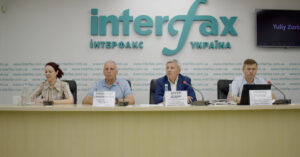
The Union of Dairy Enterprises of Ukraine (UDMU) and the Polish Polish Dairy Chamber (Polska Izba Mleka) call on their governments to actively address the dairy sector of both countries, which arose due to political turmoil in spring 2023, while respecting the principles of free trade.
“We want to express our concern about what is happening to the dairy sector right now. We, as an industry, want to ensure that our firms and our farms are continually operating for our consumers. We don’t want small groups that are not connected to the dairy sector to complicate our relations,” Agnieszka Maliszewska, director of the Polish Dairy Chamber (Polska Izba Mleka), said Friday at the first Ukrainian-Polish Dairy Dialogue, which was held at Interfax-Ukraine.
The executive director of UMSU Arsen Didur reminded that since June 2022 the European Union had abolished all customs duties and quotas for Ukrainian products for a year, which was of mutual benefit to the economies of Poland and Ukraine, and the dairy sector in particular, so this regime has been extended for another year.
The executive director of the SMPU expressed regret that since April 2023 in relations between Ukraine and Poland “some incomprehensible actions began to occur. “These events have not benefited our brotherly relations and trade relations as well,” he stated.
Didur said that representatives of the Polish and Ukrainian dairy sectors do not intend to remain indifferent to what is happening and have developed a single coordinated position, insisting that any unlawful interference in business does not benefit either party.
“Although Poland has a stronger position in the mutual trade of dairy products, the LSU is categorically against the interference of the two governments and the creation of problems in free trade. We do not accept both the ban on deliveries of Ukrainian dairy products to Poland and the creation of any additional veterinary control from the Ukrainian side. All actions of the governments should be based on the principles of democracy, free trade and the rule of law”, – emphasized the executive director of UMSU.
Industry associations of Poland and Ukraine have invited leading experts from both countries for a dialogue to unveil the results of the two countries’ trade in dairy products during 2022-2023 and to show the groundlessness of any restrictions on trade between the two countries.
An analyst at the International Food & Agri Hub BNP Paribas Poland Pawel Wierzykowski said that before a full-scale invasion of Ukraine by Russia in 2021, Ukraine was the third largest market for Polish dairy products with a share of 5% after Germany (19%) and the Czech Republic (7%). In particular, 10.5% of all exports of Polish cheese and cottage cheese, 5.3% of yogurt and 3.4% of butter were sent to Ukraine.
According to the Polish expert, in 2022 the share of exports of dairy products from Poland to Ukraine has decreased to 3.3%, but the Ukrainian market still remains a very important export vector for Polish dairy products outside the European market.
In monetary terms, export of dairy products from Poland to Ukraine in 2022 decreased by 13% compared with the prewar year 2021 – down to EUR 108 million. In 2022 Poland reduced the supply of whey to Ukraine by 32%, cheese – by 31%, milk and sour cream – by 28%, while at the same time increased the supply of yogurt by 3%.
At the same time for 4 months of 2023 a positive tendency was observed and the export of Polish dairy products to Ukraine increased, – said Wierzykowski.
He noted that Poland is the largest European supplier of dairy products to Ukraine with 50% presence. In particular, in the structure of European supplies the share of Polish products in Ukraine reaches 79% for milk and sour cream, 79% for yogurt, 72% for cheese, 51% for curd, 44% for whey powder and 15% for butter.
The expert does not consider the decrease of the trade balance by three times in 2022, to EUR43 million compared to EUR121 million in 2021, as this figure was EUR42 million in 2020 and the minimum level of EUR6 million was recorded in 2015.
According to his information, similar fluctuations were observed when Poland joined the EU, when specialists from Germany and Poland could not predict the consequences of opening markets, but markets reacted adequately and the situation leveled off within a few years.
The expert of the Institute of Agrarian Economics Leonid Tulush thanked representatives of Polish dairy products for the fact that they gave Ukraine the opportunity to sell surplus dairy products, which were formed in Ukraine due to the outflow of main consumers, in particular to Poland.
“Since the beginning of 2023, in five months the situation in the Ukrainian-Polish trade balance of dairy products has radically changed. In the first quarter, imports of Polish dairy products to Ukraine 5 times exceeded the corresponding figure for exports of Ukrainian dairy products to Poland. For 5 months since the beginning of the year the ratio has increased up to 7.4 times,” he said.
Tulush reminded that in April 2023 Ukrainian dairy products were not delivered to Poland at all. In May the products were delivered in 2 times less than in March of this year. At the same time, Polish products come to Ukraine steadily and supplies exceed EUR9.5 million per month in money terms.
“If we talk about the balance in terms of individual types of dairy products, the positive balance for Ukraine is observed only for milk powder and butter. For all other items the volume of Polish imports significantly exceeds the volume of Ukrainian exports, “- said the Ukrainian expert.
Speaking about the significance of the Polish import for the Ukrainian dairy sector, Tulush pointed out that while the share of Polish imports of dairy products to Ukraine exceeds 45%, the export of dairy products from Ukraine to the Polish market is only 8%.
Comparing the structure of export-import, he stressed that Ukraine supplies to Poland mostly dried milk, butter and whey powder. At the same time, the share of milk powder is 75%. Speaking about the structure of import of Polish dairy products to Ukraine, here, according to him, prevail cheeses of various kinds with the share of 75% and 10% account for dairy products and whey.
“This shows that the volume of mutual trade between the countries is not comparable. Ukrainian dairy products are not a threat to the Polish dairy market,” stated the Ukrainian expert.
Alexander Samokhvalov, director of Lustdorf, one of the largest dairy producers in Ukraine, pointed to the reduction in the domestic dairy market in Ukraine due to the departure of main consumers – women and children from the country and noted the importance of exports to save the work of dairy companies. According to him, there is a constructive cooperation between the producers of dairy products in Ukraine and Poland.
In particular, Lustdorf was only able to make it through 2022 by increasing exports of milk powder to the EU. Due to the loss of opportunities to export products by sea, the company is forced to transport products through the EU, particularly Poland. Recently, however, it has been idle at the border for two to three weeks or more, Samokhvalov said.
Director of the Polish Dairy Chamber (Polska Izba Mleka) Agnieszka Maliszewska stressed that both sides are recording the same problems on both sides of the border, in particular with logistics. She urged the veterinary and customs services to solve them as soon as possible.
“The best solution to problems is mutual dialogue, not protests. Especially protests by those groups that do not represent the interests of our sector, but adjust to them. It is important for us that those groups that create problems for us do not tell the Polish or Ukrainian government how to act,” she stressed.
At the end of the first Ukrainian-Polish Dairy Dialogue, both associations will send the governments of Poland and Ukraine a joint statement with proposals for resolving the situation.
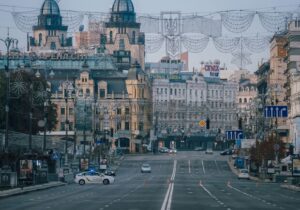
Traffic in the center of Kyiv will be restricted due to events on Friday, and will be restored later, the press service of the Kyiv City Military Administration reports.
“Tomorrow, June 16, in connection with the events during the day, traffic on the central streets of Kyiv will be restricted,” the statement said.
It is reported that the resumption of traffic will be announced later.
The KCSA urged drivers to plan their routes in advance.
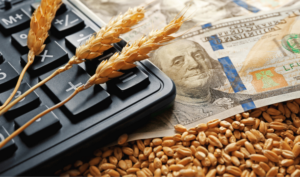
Minister of Agriculture and Rural Development of Romania Florin Barbu intends to ask the European Commission to extend restrictions on imports of agricultural products from Ukraine until the end of the year and expand the list of banned for the import of agricultural products.
“The ban is valid until September 15. I will hold a discussion with my colleagues from other countries, and we will ask for an extension until December 31. In addition to rapeseed, wheat, corn, sunflower, I will try to add up to 10 more products,” Euractiv quoted Barbu as saying in the Romanian Parliament on Wednesday.
He said the list of import bans could include honey and meat, as well as “other Romanian priorities so that farmers can sell local products.”
As reported, the EU ban on imports of wheat, corn, rapeseed and sunflowers from Ukraine came into force on May 2 and replaced unilateral decisions to ban imports by countries bordering Ukraine, particularly Poland, Bulgaria, Hungary and Slovakia, in violation of the Association Agreement and EU internal regulations as of April 28.
As noted by the EU, Bulgaria, Hungary, Poland and Slovakia undertook to cancel unilateral measures on these and all other types of agricultural products originating from Ukraine, as well as to allow free transit.
On June 5, the European Commission extended until September 15 restrictions on imports of wheat, corn, rapeseed and sunflower seeds from Ukraine to Bulgaria, Hungary, Poland, Romania and Slovakia, considering that the problems provoked by such imports have not yet been overcome. The new regulations do not allow these grains and oilseeds to be supplied to the markets of these countries under contracts concluded before May 2.
Romania was the only one of the five frontline countries that did not impose a ban on imports of Ukrainian agricultural products before the official decision of the European Commission.